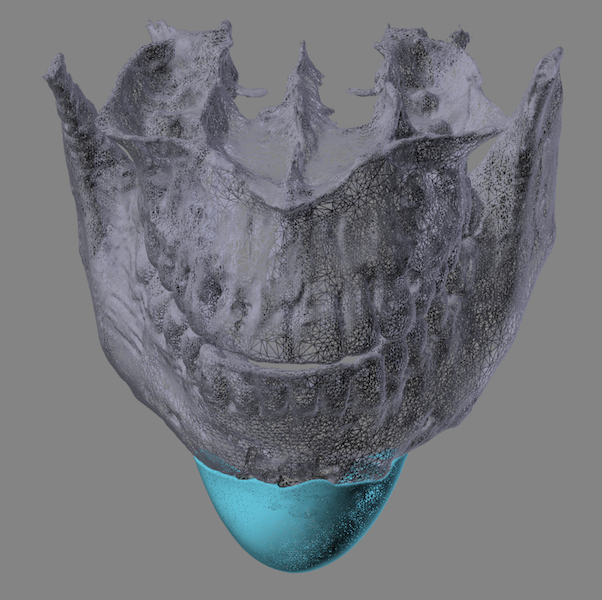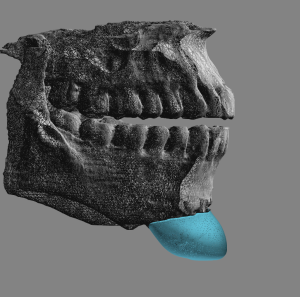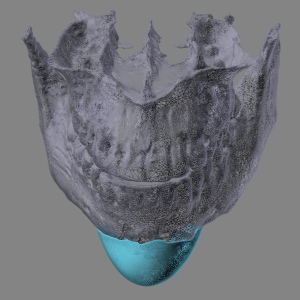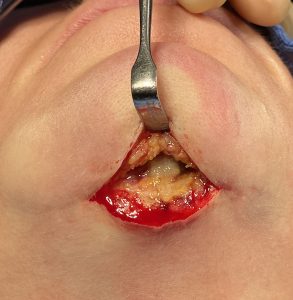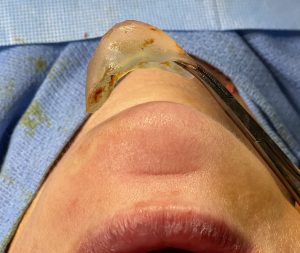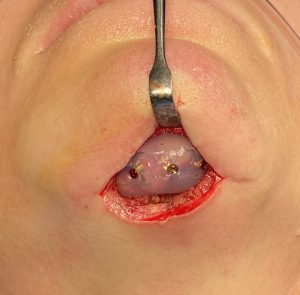Background: The desired shape of the chin can be very gender specific. Men often prefer a wider and even a more square chin shape. Conversely women usually prefer a more narrow chin shape and most contemporarily a tapered v-shape. While achieving a wider chin shape in men usually requires addition using an implant, attaining a tapered chin shape in females is commonly done through bone subtraction.
In the horizontally short female chin a more tapered shape can be achieved by moving the chin bone forward. This has a naturally tapering effect as the u-shaped chin projection is further advanced. This can be even further tapered if needed by the classic mini-v line surgery (inverted t-shaped bone genioplasty) in which a central wedge of bone is removed whether the chin is horizontally advanced or not.
An alternative approach is the alloplastic mini v-line surgery for females where an implant is used to create the tapered chin appearance. This is only applicable if the chin is horizontally short so the more narrow shape of the implant can be reflected as the soft tissue chin pad is pushed forward and wraps around it. In most such cases a standard chin imply can be used by modifying its shape and placing it on a normal bone surface. But when the underlying bone surface is not ideal (asymmetric, deformed or non-smooth) a custom chin implant approach is usually better.
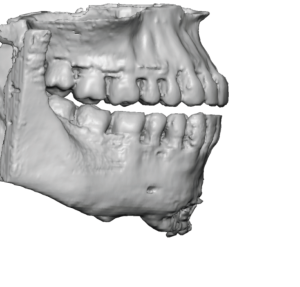

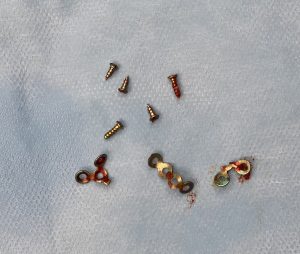
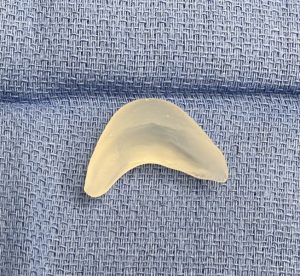
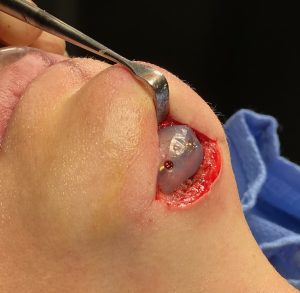
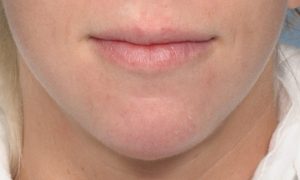
Case Highlights:
1) Bony chin deformities can be reshaped through the use of a specially designed custom implant.
2) In designing a custom chin implant only the bone is seen on a 3D CT scan and the impact of the overlying soft tissue chin pad on the final external aesthetic result is speculative.
3) To create a desired chin shape the design of a custom implant must often be exaggerated.
Dr. Barry Eppley
Indianapolis, Indiana

